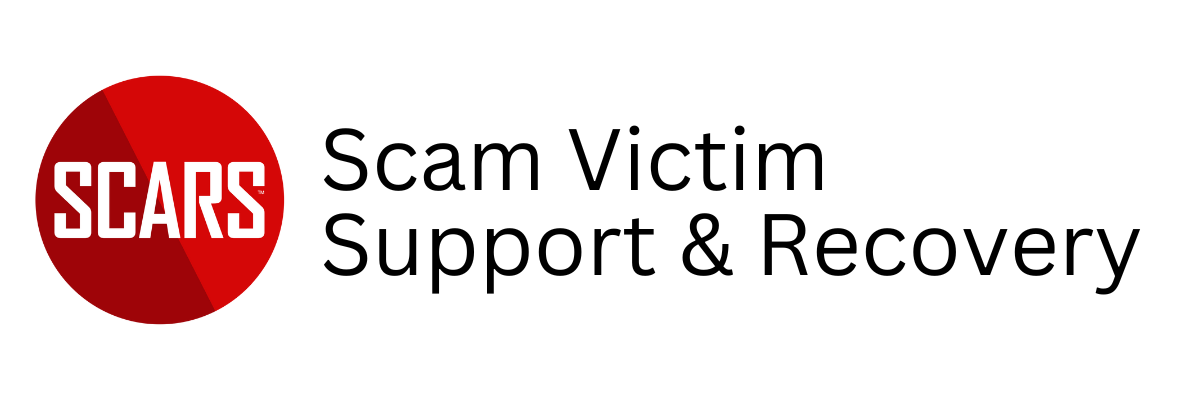Staring – A Stoic Tool To Aid Scam Victim Trauma And Emotional Regulation
An Emotional Control Technique that can be used when Triggered
Primary Category: Scam Victim Psychological Recovery
Authors:
• Vianey Gonzalez B.Sc(Psych) – Licensed Psychologist, Specialty in Crime Victim Trauma Therapy, Neuropsychologist, Certified Deception Professional, Psychology Advisory Panel & Director of the Society of Citizens Against Relationship Scams Inc.
• Tim McGuinness, Ph.D., DFin, MCPO, MAnth – Anthropologist, Scientist, Polymath, Director of the Society of Citizens Against Relationship Scams Inc.
About This Article
The technique of “stopping and staring,” derived from Stoic philosophy, provides valuable support for scam victims by facilitating emotional and cognitive healing. This practice involves pausing to observe and reflect on one’s thoughts and feelings, helping individuals break negative thought patterns and manage emotions more effectively.
By creating a pause for reflection, it allows victims to reframe negative self-talk, view their experiences from different perspectives, and cultivate self-compassion. Additionally, integrating vagus nerve relaxation methods, such as deep breathing and mindfulness, enhances the technique’s effectiveness in stress management.
Ultimately, “stopping and staring” helps rebuild strength and resilience, fostering a kinder, more balanced outlook and supporting recovery from the trauma of being scammed.
Note: This article is intended for informational purposes and does not replace professional medical advice. If you are experiencing distress, please consult a qualified mental health professional.

The Benefits of Stoic ‘Stopping and Staring’ for Scam Victims
Scams can deeply hurt people, leaving them feeling shame and self-blame. One way to help heal from this is by using an old idea from Stoic philosophy called ‘stopping and staring.’ This method helps people manage their feelings and thoughts better.
What is ‘Stopping and Staring’?
‘Stopping and staring’ is as the title implies, it is a mindfulness technique where you pause and take a moment to look at your feelings and thoughts before reacting. It’s like hitting the brakes to give yourself time to think clearly. The key is that you hold your vision on a single object for a minute or two or until the triggered emotions begin to subside.
How This Helps Scam Victims
Breaking Negative Thoughts: Scam victims often have hurtful thoughts like ‘I should have known better’ or ‘It’s my fault.’ By stopping and staring, they can take a break from these negative thoughts and see them more clearly. This helps them realize these thoughts might not be true.
Managing Emotions: When you stop and stare at your emotions, you can learn to control them better. For scam victims, this means they can handle feelings like anger or sadness without letting them take over.
Changing How You See Things: Stopping and staring helps scam victims look at their situation from a different angle. This can help them understand that the scam was caused by someone else, not because of their own mistakes.
Rebuilding Strength & Resiliency: Taking time to pause helps scam victims build strength and feel more in control. This can make it easier to handle tough feelings and move forward.
Being Kind to Yourself: By observing their thoughts and emotions, scam victims can learn to be kinder to themselves. Instead of blaming themselves, they can understand that their feelings are normal and part of healing.
Breaking Negative Thoughts with ‘Stopping and Staring’
When people experience a scam, they often have negative thoughts that can be very damaging. These thoughts might include things like ‘I’m so stupid for falling for this’ or ‘I should have known better.’ These kinds of thoughts can make victims feel worse and can be hard to shake off.
The ‘stopping and staring’ technique helps break these negative thoughts into smaller, manageable pieces. Here’s how it works:
Pausing to Reflect
The first step is to stop whatever you’re doing and take a moment to reflect. Instead of reacting immediately to a negative thought, pause and let the thought sit with you. This pause gives you time to think clearly and not just react on impulse.
Examining the Thought
After pausing, take a closer look at the thought. Ask yourself questions like:
-
-
- Is this thought really true?
- What evidence do I have that supports or contradicts this thought?
- Am I being too hard on myself?
-
This helps you see whether the thought is based on facts or just feelings.
Challenging the Thought
Once you’ve examined the thought, challenge it. For example, if you think ‘I’m so stupid for falling for this scam,’ ask yourself:
-
-
- Would I say this to a friend who was scammed?
- Is it fair to call myself stupid for something that was designed to deceive me?
-
By questioning the thought, you can start to see that it might be too harsh or not entirely true.
Replacing with a Balanced Thought
Finally, replace the negative thought with a more balanced and realistic one. For instance:
-
-
- Instead of ‘I’m so stupid,’ try ‘I was tricked by someone who is very good at deceiving others. It’s important to learn from this experience.’
-
This new thought is kinder and more realistic, helping you feel better about yourself.
Managing Emotions with ‘Stopping and Staring’
When dealing with the aftermath of a scam, managing emotions can be very challenging. People might feel overwhelmed by anger, sadness, or anxiety. The ‘stopping and staring’ technique can help manage these emotions effectively. Here’s how it works:
Pausing to Gain Control
When you notice strong emotions taking over, the first step is to pause. Stop whatever you’re doing and take a moment to breathe deeply. This pause helps you gain control over your immediate reactions and prevents you from acting on intense feelings.
Observing Your Feelings
After pausing, take a moment to observe your emotions. Ask yourself:
-
-
- What am I feeling right now?
- Where do I feel this emotion in my body (e.g., a tight chest or a racing heart)?
- How strong is this emotion?
-
Observing your feelings helps you understand them better and prevents you from being overwhelmed by them.
Identifying the Source
Next, try to identify what’s causing these emotions. Are they related to the scam, or is there another underlying issue? Understanding the source can help you address the root cause rather than just the symptoms.
Reflecting on Your Reactions
Reflect on how you’re reacting to your emotions. Are you reacting in a way that helps you cope, or are your reactions making things worse? For example, if you’re feeling angry, are you letting that anger lead to arguments or impulsive decisions?
Reflecting helps you see whether your reactions are constructive or harmful.
Choosing a Response
Based on your reflection, choose a more constructive response. Instead of reacting impulsively to anger, for example, you might decide to go for a walk or talk to a friend. Choosing a response that aligns with your values and goals helps you manage your emotions in a healthier way.
Developing Coping Strategies
Use this technique regularly to develop effective coping strategies. You might find that certain activities, like deep breathing, journaling, or exercising, help manage your emotions better.
Practicing Mindfulness
Incorporate mindfulness practices, such as focusing on your breath or grounding yourself in the present moment. This practice helps you stay connected to the present, reducing the impact of overwhelming emotions.
Changing How You See Things
‘Stopping and staring’ can help change how you see things by providing a pause that allows you to shift your perspective and gain clarity. Here’s how it works:
Understanding ‘Stopping and Staring’
Stopping: This involves pausing your current activity or thought process. It’s a deliberate break that allows you to step back from the situation.
Staring: This means focusing your attention on a specific object, detail, or the present moment. It helps you to observe and process what’s around you.
How It Changes Your Perspective
Gaining Clarity
How It Helps: When you stop and stare, you create a mental and emotional pause. This break allows you to view a situation more clearly without the immediate pressure of emotions or stress.
How to Practice: During a pause, take a moment to observe your surroundings or focus on a single object. This helps clear your mind and reduces mental clutter, allowing you to see the situation more objectively.
Breaking the Automatic Response Cycle
How It Helps: Often, when we react to situations automatically, we’re guided by habitual thought patterns and emotions. Stopping and staring interrupts this cycle, giving you a chance to choose a more thoughtful response.
How to Practice: When you feel a strong emotional reaction, pause and focus on your breathing or an object in your environment. This interruption helps you break out of automatic reactions and consider a more measured response.
Reframing the Situation
How It Helps: By stopping and staring, you allow yourself to view the situation from a different angle. This shift can help you reframe your thoughts and see things in a new light.
How to Practice: After pausing, ask yourself questions like, “What else might be true about this situation?” or “How might someone else view this differently?” This helps you explore alternative perspectives and challenge any biased or negative thinking.
Reducing Overwhelm
How It Helps: When faced with overwhelming situations or emotions, stopping and staring helps break down the experience into smaller, more manageable parts. This can reduce feelings of being overwhelmed and make the situation feel more controllable.
How to Practice: Focus on one specific detail or aspect of the situation at a time. For example, if you’re feeling stressed about a project, focus on just one task or element. This approach can help make the overall situation feel less daunting.
Enhancing Mindfulness
How It Helps: Stopping and staring encourages mindfulness, which is the practice of being fully present in the moment. Mindfulness can help you become more aware of your thoughts and feelings, leading to a more balanced perspective.
How to Practice: As you pause and focus on your surroundings or an object, pay attention to the sensations, colors, and textures. Being mindful helps you stay grounded and observe things without immediate judgment.
The Connection to the Vagus Nerve
This also relates to the vagus nerve, which plays a significant role in regulating the body’s stress response and emotional state. Integrating vagus nerve relaxation techniques into the ‘stopping and staring’ approach can enhance its effectiveness in managing emotions.
Here’s how you can connect these concepts and incorporate vagus nerve relaxation:
Understanding the Vagus Nerve
The vagus nerve is a key part of the parasympathetic nervous system, which helps regulate your body’s relaxation and recovery processes. It influences various bodily functions, including heart rate, digestion, and emotional regulation. When the vagus nerve is activated, it helps calm the body and reduce stress.
Connecting ‘Stopping and Staring’ with the Vagus Nerve
Deep Breathing
How It Helps: Deep breathing stimulates the vagus nerve and promotes relaxation. By taking slow, deep breaths, you activate the parasympathetic nervous system, which helps calm your emotions.
How to Practice: During the ‘stopping’ phase, take a few deep breaths. Inhale slowly through your nose, hold the breath for a moment, and then exhale slowly through your mouth. Focus on the sensation of the breath to help calm your nervous system.
Focused Eye Movements
How It Helps: Eye movements can influence the vagus nerve and the body’s stress response. Specifically, moving your eyes from side to side can help reduce anxiety and promote a sense of calm.
How to Practice: While ‘staring,’ gently move your eyes horizontally from left to right. This can be done for a few minutes to help activate the vagus nerve and support relaxation.
Mindful Observation
How It Helps: Observing your surroundings mindfully can help engage the vagus nerve by grounding you in the present moment and reducing stress.
How to Practice: During the ‘staring’ phase, focus on your immediate environment. Notice details such as colors, textures, and shapes. This mindfulness practice helps divert attention from overwhelming emotions and supports vagal activation.
Progressive Muscle Relaxation
How It Helps: Progressive muscle relaxation can also influence the vagus nerve by helping to reduce physical tension and stress in the body.
How to Practice: As you pause, systematically tense and then relax different muscle groups in your body. Start from your toes and work your way up to your head. This helps promote overall relaxation and supports vagal activation.
Combining Techniques
To effectively incorporate vagus nerve relaxation into the ‘stopping and staring’ technique, follow these steps:
-
- Stop and Breathe: Pause whatever you’re doing and take slow, deep breaths.
- Stare and Observe: Gently move your eyes from side to side while focusing on your surroundings.
- Practice Mindfulness: Pay attention to details around you and stay grounded in the present.
- Relax Your Body: Use progressive muscle relaxation to ease physical tension.
Rebuilding Strength & Resiliency
“Stopping and staring” can help rebuild strength and resilience by offering a moment of reflection and perspective that supports personal growth and recovery.
Here’s how this practice contributes to developing these qualities:
Rebuilding Strength and Resilience Through Stopping and Staring
Providing a Pause for Reflection
How It Helps: Taking a moment to stop and stare allows you to reflect on your experiences and emotions. This reflection helps you understand your challenges better and recognize your progress, which builds inner strength.
How to Practice: When faced with a tough situation, pause and take a deep breath. Reflect on what you’ve learned from the experience and acknowledge your efforts and achievements. This reflection reinforces your sense of capability and growth.
Encouraging a Balanced Perspective
How It Helps: By stopping and staring, you give yourself a chance to view situations from a balanced perspective. This can prevent you from feeling overwhelmed by focusing too much on the negatives and helps you see the positives, which fosters resilience.
How to Practice: During a pause, consider both the challenges and the positive aspects of your situation. For example, if you’re dealing with a setback, identify any strengths you’ve demonstrated and potential opportunities for growth. This balanced view helps you remain resilient in the face of adversity.
Reducing Reactivity
How It Helps: Stopping and staring breaks the cycle of immediate, emotional reactions. By slowing down your response, you can handle stress more effectively and make decisions that align with your long-term goals, reinforcing your strength and resilience.
How to Practice: When you feel a strong emotional reaction, pause and observe your feelings without acting on them immediately. Use this moment to consider a measured response that supports your well-being and objectives.
Building Self-Awareness
How It Helps: This practice encourages you to become more aware of your thoughts and feelings. Increased self-awareness helps you understand your triggers and reactions, allowing you to handle stressors more effectively and build emotional resilience.
How to Practice: As you pause, notice your current emotions and thoughts. Reflect on how they influence your behavior and decisions. This self-awareness helps you manage your responses and strengthen your ability to cope with challenges.
Reinforcing Positive Habits
How It Helps: Stopping and staring provides an opportunity to reinforce positive habits and behaviors. By focusing on constructive aspects of your life and acknowledging your progress, you build resilience and strengthen your coping mechanisms.
How to Practice: During your pause, remind yourself of positive habits you’ve established and achievements you’ve made. Recognize and celebrate these successes to reinforce your resilience and motivation.
Creating Mindfulness and Presence
How It Helps: This practice encourages mindfulness, which is the ability to stay present and engaged in the moment. Mindfulness supports resilience by helping you manage stress and maintain focus, which is crucial for overcoming difficulties.
How to Practice: Focus on your breath, surroundings, or an object during your pause. Practice being fully present and attentive to the current moment, which helps you stay grounded and manage stress more effectively.
Being Kinder to Yourself
For scam victims, using the “stopping and staring” technique can be a powerful tool for self-compassion and kindness. This practice allows individuals to pause, reflect, and treat themselves with the same understanding and patience they would offer a friend. Here’s how stopping and staring can help scam victims be kinder to themselves:
How Stopping and Staring Can Help Scam Victims Be Kinder to Themselves
Acknowledging and Validating Feelings
How It Helps: Stopping and staring provides a moment to recognize and validate your feelings of hurt, betrayal, and confusion. By giving yourself permission to acknowledge these emotions, you’re taking a crucial step towards self-compassion.
How to Practice: When you feel overwhelmed or distressed, take a pause and allow yourself to fully experience your emotions without judgment. Understand that it’s normal to feel this way after a scam, and remind yourself that these feelings are a natural response to a difficult situation.
Avoiding Self-Judgment
How It Helps: This technique helps interrupt the cycle of self-criticism and negative self-talk that often follows a scam. By stopping and staring, you can distance yourself from harsh self-judgment and focus on being more forgiving and understanding toward yourself.
How to Practice: When you catch yourself criticizing or blaming yourself for the scam, pause and reflect on the unfairness of this self-judgment. Remind yourself that scams exploit vulnerabilities and that it’s not your fault. Replace negative thoughts with more supportive and understanding ones.
Reframing Negative Thoughts
How It Helps: Stopping and staring allows you to pause and reframe negative thoughts that may arise after being scammed. This can help you shift from self-blame to self-compassion by changing the way you view the situation.
How to Practice: During a pause, observe your negative thoughts and challenge them. For example, if you think, “I should have known better,” reframe this to, “I was deceived by someone skilled in manipulation. It’s okay to make mistakes, and I can learn from this experience.”
Recognizing Personal Strengths
How It Helps: This practice helps you focus on your strengths and resilience. By taking a moment to recognize your abilities and efforts, you foster a sense of self-kindness and appreciation.
How to Practice: When pausing, reflect on the strengths and positive qualities you’ve demonstrated despite the scam. Acknowledge your ability to confront and manage the situation, and remind yourself of your resilience and determination.
Promoting Self-Care and Compassion
How It Helps: Stopping and staring gives you a chance to consider what self-care practices you need. This practice supports your overall well-being by encouraging you to be gentle and caring toward yourself.
How to Practice: Use the pause to think about self-care activities that would be comforting or nurturing. It might be taking a walk, practicing relaxation techniques, or reaching out to supportive friends. Prioritize activities that help you feel better and more at ease.
Setting Realistic Expectations
How It Helps: By pausing to reflect, you can set more realistic expectations for your recovery process. Understanding that healing takes time and that it’s okay to have setbacks fosters a kinder attitude toward yourself.
How to Practice: During your pause, remind yourself that recovery from a scam is a gradual process. Set achievable goals for yourself and acknowledge each small step forward. Be patient and understanding with yourself as you navigate this journey.
Encouraging Positive Self-Talk
How It Helps: Stopping and staring provides an opportunity to replace negative self-talk with positive affirmations. This shift in self-talk promotes kindness and boosts your self-esteem.
How to Practice: As you pause, practice positive self-talk by reminding yourself of your worth and capabilities. Use affirmations such as, “I am doing my best to recover from this situation,” or “I am worthy of kindness and compassion.”
In Case They Spot Your Staring
Of course, if you stop and stare in public it might appear odd to the rest of the world. Our Dr. Tim has created some useful phrases that you can use when someone looks at you oddly or asks if you are ok:
- Yes, I am fine, I was just receiving a message from the mothership.
- Yes, I am fine. Did you ever have one of those impulses where you wanted to kill everyone?
- Yes, I am fine. The neural implant in my brain accidentally switched over to porn.
- Yes, I am fine. I was just thinking about how to cook a haggis.
- Yes, I am fine. The earwig in my ear was telling me the lotto numbers for this week.
- Yes, I am fine. I was just practicing being invisible. Must not be working yet.
- Yes, I am fine. I was just imagining someone I know in hell!
- Yes, I am fine. A squirrel was talking to me.
Those may not be for everyone. You can just explain that you were taking a moment to practice mindfulness. That will work too!
Using Stoic Ideas in Therapy
Therapists can help scam victims use these Stoic ideas by guiding them through activities like writing about their feelings or meditating. These activities help victims manage their emotions and thoughts more effectively.
Stoic ideas offer valuable insights that can enhance therapeutic practices by helping individuals manage their emotions, make better decisions, and live more fulfilling lives.
Here are some examples of Stoic concepts that are useful in therapy:
Control What You Can Control
Stoic Idea: The Stoics believed in focusing on what is within your control and accepting what is not. This principle encourages people to concentrate on their actions, responses, and attitudes rather than external events.
Therapeutic Application: In therapy, this idea can help clients distinguish between what they can change (e.g., their behavior or mindset) and what is beyond their control (e.g., other people’s actions or past events). This focus can reduce feelings of helplessness and increase a sense of agency.
Example: If a client is stressed about a job loss, a therapist might help them focus on actions they can control, such as updating their resume or networking, rather than worrying about factors outside their control, like the job market.
Reframe Negative Thoughts
Stoic Idea: Stoicism teaches the practice of cognitive reframing—changing your perspective on events to manage your emotional responses. The Stoics believed that it’s not the events themselves, but how we perceive them that causes our distress.
Therapeutic Application: Therapists use cognitive-behavioral techniques to help clients reframe negative thoughts. This process involves challenging irrational or harmful beliefs and replacing them with more balanced and constructive thoughts.
Example: If a client feels overwhelmed by a minor setback, therapy might involve reframing the setback as an opportunity for growth rather than a failure.
Practice Mindfulness and Presence
Stoic Idea: Stoicism encourages living in the present moment and being mindful of one’s thoughts and actions. This practice helps individuals avoid getting caught up in regrets about the past or worries about the future.
Therapeutic Application: Mindfulness practices in therapy, such as meditation and grounding exercises, can help clients stay focused on the present, reducing anxiety and enhancing emotional regulation.
Example: A therapist might use mindfulness techniques to help a client who is anxious about future events by guiding them to focus on their current feelings and sensations.
Embrace Adversity as Growth
Stoic Idea: The Stoics viewed challenges and adversity as opportunities for personal growth. They believed that facing difficulties with a positive mindset could lead to greater strength and wisdom.
Therapeutic Application: Therapy can help clients reframe adversities as chances for personal development. This perspective encourages resilience and helps individuals find meaning in their struggles.
Example: If a client is dealing with a difficult breakup, a therapist might work with them to see the experience as a chance to learn more about themselves and their needs in relationships.
Accept Impermanence
Stoic Idea: Stoicism teaches that all things are temporary, including our emotions and circumstances. Accepting this impermanence can help individuals cope with both positive and negative experiences more effectively.
Therapeutic Application: Therapists can help clients understand that their current feelings or situations will change over time. This acceptance can reduce the intensity of their distress and provide a more balanced perspective.
Example: For a client experiencing acute grief, a therapist might help them understand that while the pain is intense now, it will evolve and lessen with time, fostering hope and patience in the healing process.
Cultivate Gratitude
Stoic Idea: The Stoics practiced gratitude by appreciating the good aspects of life, even in the face of adversity. This practice helps shift focus from what is lacking to what is present and valuable.
Therapeutic Application: Therapists can encourage clients to keep gratitude journals or engage in gratitude exercises to foster a more positive outlook and improve overall well-being.
Example: A therapist might suggest that a client who is struggling with self-esteem write down daily things they appreciate about themselves or their life to counteract negative self-perceptions.
Develop Self-Discipline
Stoic Idea: Stoicism emphasizes self-discipline and control over one’s desires and impulses. By practicing self-discipline, individuals can lead a more intentional and purposeful life.
Therapeutic Application: In therapy, clients can work on developing self-discipline to achieve their goals and manage their behaviors. This might involve setting small, achievable goals and gradually building discipline through consistent practice.
Example: A therapist might help a client set up a structured routine or create a plan to manage procrastination, using Stoic principles of self-discipline to guide their efforts.
More About Stoicism
Visit: https://dailystoic.com/what-is-stoicism-a-definition-3-stoic-exercises-to-get-you-started/ to learn more about stoicism and how it can be useful in our daily lives.
Summary
‘Stopping and staring’ is a simple but powerful tool that helps scam victims deal with their emotions and thoughts. By pausing and observing, they can understand their feelings better, manage them more effectively, and start to heal from the trauma of being scammed.
It helps scam victims break negative thoughts by creating a pause for reflection, examining and challenging those thoughts, and then replacing them with more balanced ones. This technique helps people manage their feelings and reduce the impact of negative self-talk, leading to a healthier mindset and aiding in their recovery.
The technique helps manage emotions by creating a moment to pause, observe, and reflect. By identifying the source of your feelings, understanding your reactions, and choosing constructive responses, you can better control and manage your emotions. This method helps prevent emotional overwhelm and supports healthier coping strategies.
Integrating vagus nerve relaxation techniques, such as deep breathing, focused eye movements, mindfulness, and progressive muscle relaxation, into the ‘stopping and staring’ approach can enhance emotional regulation. By combining these practices, you can effectively manage stress and promote a sense of calm.
It also contributes to rebuilding strength and resilience by offering a moment for reflection, encouraging a balanced perspective, reducing reactivity, building self-awareness, reinforcing positive habits, and fostering mindfulness. This practice helps you gain clarity, manage stress, and recognize your progress, all of which are essential for developing the inner strength and resilience needed to navigate life’s challenges.
For scam victims, the practice of stopping and staring helps in being kinder to themselves by validating emotions, avoiding self-judgment, reframing negative thoughts, recognizing personal strengths, promoting self-care, setting realistic expectations, and encouraging positive self-talk. This approach creates a more compassionate attitude, enabling victims to heal more effectively and rebuild their sense of self-worth and resilience.
Stoic ideas offer practical tools for scam victim recovery by helping clients manage their emotions, reframe negative thoughts, embrace growth through adversity, and develop self-discipline. These principles can support individuals in creating a more balanced, resilient, and fulfilling life.
Please Rate This Article
Please Leave Us Your Comment Below
Also, tell us of any topics we might have missed.
-/ 30 /-
What do you think about this?
Please share your thoughts in a comment above!
-/ 30 /-
What do you think about this?
Please share your thoughts in a comment above!
SCARS LINKS: AgainstScams.org RomanceScamsNOW.com ContraEstafas.org ScammerPhotos.com Anyscam.com ScamsNOW.com
reporting.AgainstScams.org support.AgainstScams.org membership.AgainstScams.org donate.AgainstScams.org shop.AgainstScams.org
youtube.AgainstScams.org linkedin.AgainstScams.org facebook.AgainstScams.org
ARTICLE RATING
TABLE OF CONTENTS
CATEGORIES
U.S. & Canada Suicide Lifeline 988
![NavyLogo@4x-81[1] Staring - A Stoic Tool To Aid Scam Victim Trauma And Emotional Regulation - 2024](https://scamsnow.com/wp-content/uploads/2025/04/NavyLogo@4x-811.png)
ARTICLE META
Important Information for New Scam Victims
- Please visit www.ScamVictimsSupport.org – a SCARS Website for New Scam Victims & Sextortion Victims.
- SCARS Institute now offers its free, safe, and private Scam Survivor’s Support Community at www.SCARScommunity.org – this is not on a social media platform, it is our own safe & secure platform created by the SCARS Institute especially for scam victims & survivors.
- SCARS Institute now offers a free recovery learning program at www.SCARSeducation.org.
- Please visit www.ScamPsychology.org – to more fully understand the psychological concepts involved in scams and scam victim recovery.
If you are looking for local trauma counselors, please visit counseling.AgainstScams.org
If you need to speak with someone now, you can dial 988 or find phone numbers for crisis hotlines all around the world here: www.opencounseling.com/suicide-hotlines
Statement About Victim Blaming
Some of our articles discuss various aspects of victims. This is both about better understanding victims (the science of victimology) and their behaviors and psychology. This helps us to educate victims/survivors about why these crimes happened and not to blame themselves, better develop recovery programs, and help victims avoid scams in the future. At times, this may sound like blaming the victim, but it does not blame scam victims; we are simply explaining the hows and whys of the experience victims have.
These articles, about the Psychology of Scams or Victim Psychology – meaning that all humans have psychological or cognitive characteristics in common that can either be exploited or work against us – help us all to understand the unique challenges victims face before, during, and after scams, fraud, or cybercrimes. These sometimes talk about some of the vulnerabilities the scammers exploit. Victims rarely have control of them or are even aware of them, until something like a scam happens, and then they can learn how their mind works and how to overcome these mechanisms.
Articles like these help victims and others understand these processes and how to help prevent them from being exploited again or to help them recover more easily by understanding their post-scam behaviors. Learn more about the Psychology of Scams at www.ScamPsychology.org
SCARS INSTITUTE RESOURCES:
If You Have Been Victimized By A Scam Or Cybercrime
♦ If you are a victim of scams, go to www.ScamVictimsSupport.org for real knowledge and help
♦ SCARS Institute now offers its free, safe, and private Scam Survivor’s Support Community at www.SCARScommunity.org – this is not on a social media platform, it is our own safe & secure platform created by the SCARS Institute especially for scam victims & survivors.
♦ Enroll in SCARS Scam Survivor’s School now at www.SCARSeducation.org
♦ To report criminals, visit https://reporting.AgainstScams.org – we will NEVER give your data to money recovery companies like some do!
♦ Follow us and find our podcasts, webinars, and helpful videos on YouTube: https://www.youtube.com/@RomancescamsNowcom
♦ Learn about the Psychology of Scams at www.ScamPsychology.org
♦ Dig deeper into the reality of scams, fraud, and cybercrime at www.ScamsNOW.com and www.RomanceScamsNOW.com
♦ Scam Survivor’s Stories: www.ScamSurvivorStories.org
♦ For Scam Victim Advocates visit www.ScamVictimsAdvocates.org
♦ See more scammer photos on www.ScammerPhotos.com
You can also find the SCARS Institute’s knowledge and information on Facebook, Instagram, X, LinkedIn, and TruthSocial
Psychology Disclaimer:
All articles about psychology and the human brain on this website are for information & education only
The information provided in this and other SCARS articles are intended for educational and self-help purposes only and should not be construed as a substitute for professional therapy or counseling.
Note about Mindfulness: Mindfulness practices have the potential to create psychological distress for some individuals. Please consult a mental health professional or experienced meditation instructor for guidance should you encounter difficulties.
While any self-help techniques outlined herein may be beneficial for scam victims seeking to recover from their experience and move towards recovery, it is important to consult with a qualified mental health professional before initiating any course of action. Each individual’s experience and needs are unique, and what works for one person may not be suitable for another.
Additionally, any approach may not be appropriate for individuals with certain pre-existing mental health conditions or trauma histories. It is advisable to seek guidance from a licensed therapist or counselor who can provide personalized support, guidance, and treatment tailored to your specific needs.
If you are experiencing significant distress or emotional difficulties related to a scam or other traumatic event, please consult your doctor or mental health provider for appropriate care and support.
Also read our SCARS Institute Statement about Professional Care for Scam Victims – click here
If you are in crisis, feeling desperate, or in despair, please call 988 or your local crisis hotline.
More ScamsNOW.com Articles
A Question of Trust
At the SCARS Institute, we invite you to do your own research on the topics we speak about and publish. Our team investigates the subject being discussed, especially when it comes to understanding the scam victims-survivors’ experience. You can do Google searches, but in many cases, you will have to wade through scientific papers and studies. However, remember that biases and perspectives matter and influence the outcome. Regardless, we encourage you to explore these topics as thoroughly as you can for your own awareness.























![scars-institute[1] Staring - A Stoic Tool To Aid Scam Victim Trauma And Emotional Regulation - 2024](https://scamsnow.com/wp-content/uploads/2025/04/scars-institute1.png)
![niprc1.png1_-150×1501-1[1] Staring - A Stoic Tool To Aid Scam Victim Trauma And Emotional Regulation - 2024](https://scamsnow.com/wp-content/uploads/2025/04/niprc1.png1_-150x1501-11.webp)
